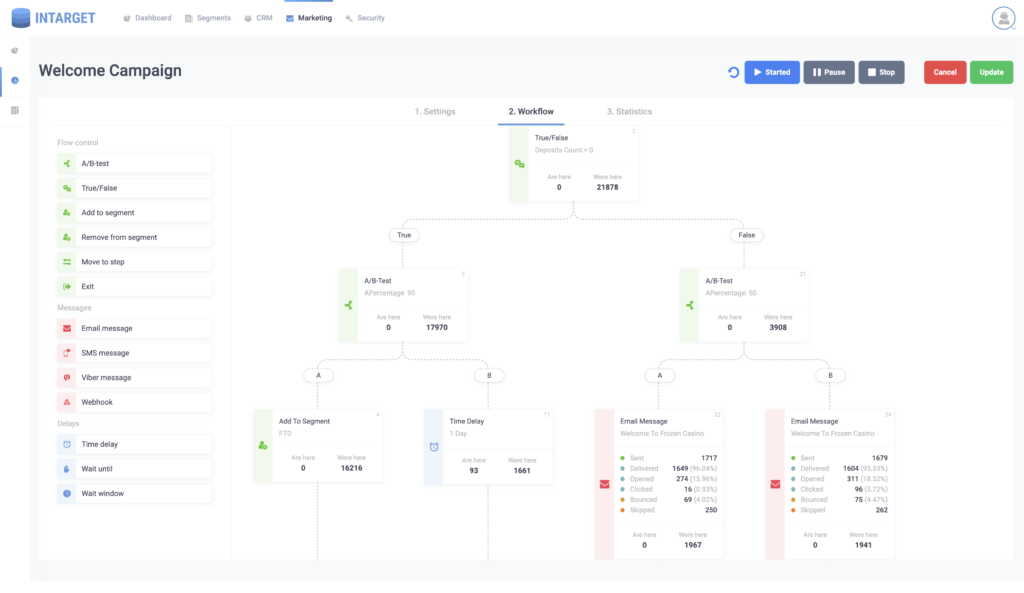Camp Drops: Your Gateway to the Great Outdoors
Explore tips, gear reviews, and adventure stories for outdoor enthusiasts.
Casino Retention Tactics That Keep Players Coming Back for More
Unlock the secrets to keeping players engaged! Discover casino retention tactics that ensure they keep coming back for more thrilling action.
10 Proven Casino Retention Strategies to Boost Player Loyalty
In the competitive world of online gaming, retaining players is as crucial as attracting new ones. Implementing 10 proven casino retention strategies can significantly enhance player loyalty and ensure a sustainable revenue stream. These strategies range from personalized communication to exclusive rewards. For instance, utilizing data analytics can help casinos understand player behavior and preferences, allowing for targeted promotions that keep them engaged. Additionally, offering loyalty programs that reward players for their continued activity not only fosters a sense of belonging but also incentivizes regular play.
Another essential strategy is to create a seamless user experience. Ensuring that your website or application is easy to navigate and offers quick access to games can make a significant difference in player retention. Incorporating live chat support can also enhance player interaction and satisfaction. Moreover, regular updates and game additions keep the gaming experience fresh and exciting. By communicating these changes through newsletters or push notifications, casinos can maintain player interest and engagement. By applying these proven retention strategies, casinos can build a loyal player base that contributes to long-term success.

Counter Strike is a highly popular tactical first-person shooter that emphasizes team-based gameplay. Players engage in intense matches where they can utilize strategy and skill to outmaneuver their opponents. For those looking to enhance their gaming experience, consider checking out the duelbits promo code for exciting bonuses. The game has evolved over the years, maintaining a dedicated community and competitive scene.
How to Create an Engaging Loyalty Program That Keeps Players Returning
Creating an engaging loyalty program is essential for keeping players returning to your platform. Start by understanding your audience and their preferences. You can achieve this through surveys or analyzing player data to identify what motivates them. Once you have this information, consider implementing a tiered rewards system that offers increasing benefits as players reach higher levels of loyalty. This not only encourages players to participate more but also creates a sense of achievement and recognition.
In addition to a tiered system, communication is key in maintaining player interest. Regularly update players about their status in the loyalty program and provide personalized rewards based on their gameplay habits. Incorporating social elements, such as leaderboards or team challenges, can also enhance engagement. Remember to solicit feedback to continually improve the program and ensure it meets the evolving needs of your players. Ultimately, a well-crafted loyalty program can significantly boost retention and create a community of dedicated players.
What Psychological Tactics Can Casinos Use to Enhance Player Experience?
Casinos often employ a variety of psychological tactics to create an immersive and engaging player experience. One commonly used technique is the concept of loss aversion, which highlights the emotional pain of losing compared to the pleasure of winning. By designing games with small, frequent wins, casinos can keep players engaged and minimize feelings of disappointment, even amidst losses. Additionally, sound and lighting play critical roles in enhancing the atmosphere; upbeat music and bright lights can stimulate excitement and encourage play, leading players to spend more time in the gaming environment.
Another effective tactic is the implementation of comp programs, which reward players for their loyalty. These programs often provide complimentary services or discounts, making players feel valued and encouraging them to return. Moreover, casinos utilize social proof, where successful players are visibly celebrated, creating an environment that attracts others to join in. By leveraging these psychological strategies, casinos not only enhance the player experience but also increase the likelihood of repeat visits and prolonged engagement.